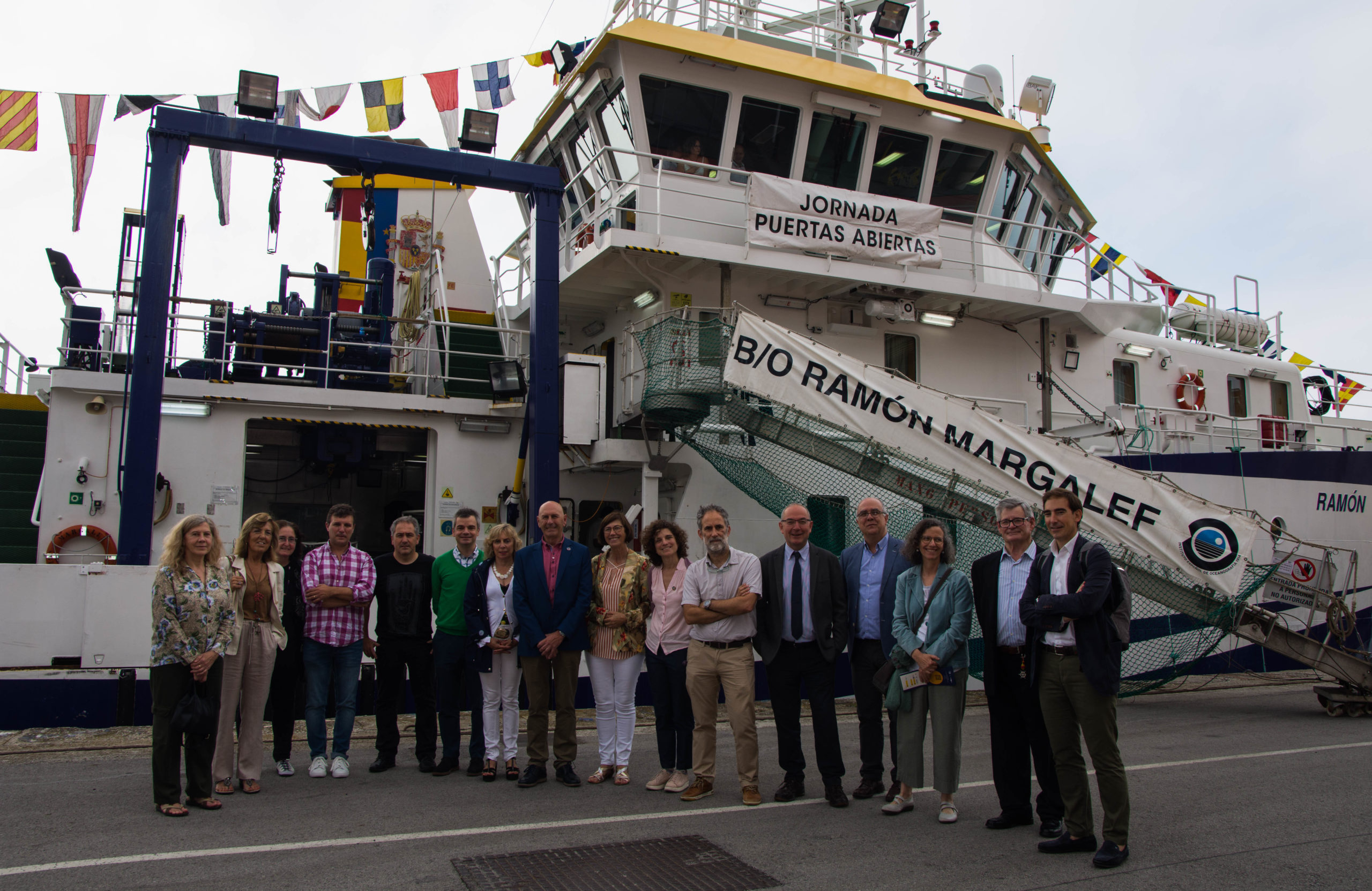The oceanographic vessel Ramón Margalef, of the Spanish Institute of Oceanography (IEO), opened its doors today, in Santander, on the occasion of the celebration of the Day of the People of the Sea.
The oceanographic vessel Ramón Margalef, of the Spanish Institute of Oceanography (IEO), has opened its doors today, in Santander, to show society how to work on board a marine research vessel, on the occasion of the celebration of the Day of the People of the Sea.
The opening of the conference was attended by the director of the Biodiversity Foundation of the Ministry for Ecological Transition, Sonia Castañeda, the director of the IEO’s oceanographic centre in Santander, Alicia Lavín, as well as the Government Delegate in Cantabria, Eduardo Echevarría and the general director of Innovation, Technological Development and Industrial Entrepreneurship of the Cantabrian Government, Jorge Muyo.
From the maritime station of Santander, the ship will set sail tomorrow in a new campaign of the LIFE IP INTEMARES project to Cap Bretón, an area located off the coast of the Basque Country that is home to a complex system of underwater canyons.
Researchers from the Spanish Institute of Oceanography and AZTI will study this area with the aim of improving knowledge of this area and obtaining a solid scientific basis that will allow, where appropriate, its declaration as a Site of Community Interest (SCI) in the marine Natura 2000 Network.
Thus, Cap Bretón is one of the new candidate areas to expand the network of protected areas in Spain, which, with more than 12% of its waters protected, is among the leading European countries in marine conservation.
The head of this submarine canyon system is located at a depth of 200 meters and reaches depths of more than 2,000 meters. This oceanographic campaign will exhaustively study those in which, based on the previous information available, a greater presence of rocky bottoms and relevant habitats has been detected. Among its natural treasures, fields of depressions generated by fluid leaks, known as pockmarks, have been identified that could harbor species linked to these emissions.
As in other submarine canyons in the Atlantic, the presence of other habitats is also expected, as well as complex biological communities associated with deep-sea corals and sponges of high ecological value, but whose distribution and conservation status are currently unknown.
The researchers will use different techniques to explore the seabed using non-invasive visual systems, as well as taking samples of sediments and species found in the most superficial part of the seabed to carry out a detailed inventory.
In addition, indirect techniques based on underwater acoustics will also be used to develop a detailed mapping of the seabed. The combination of all the data collected will allow the distribution maps of the seabed habitats in this area to be drawn up.
NEW PROJECTS TO STRENGTHEN FISHERIES SUSTAINABILITY
On the occasion of the celebration of the Day of the Seafarers, a conference was also held at the Santander Oceanographic Centre (IEO) to present 28 projects of the Pleamar Programme, an initiative of the Biodiversity Foundation of the Ministry for Ecological Transition, which has the support of the European Maritime and Fisheries Fund. whose main objective is to strengthen the sustainability of the Spanish fisheries and aquaculture sector in the context of the blue economy.
This conference, focused on projects linked to marine protected areas, has had the participation of its protagonists, including managers, R+D+i agents, public administrations, non-profit entities and organizations in the sector.











